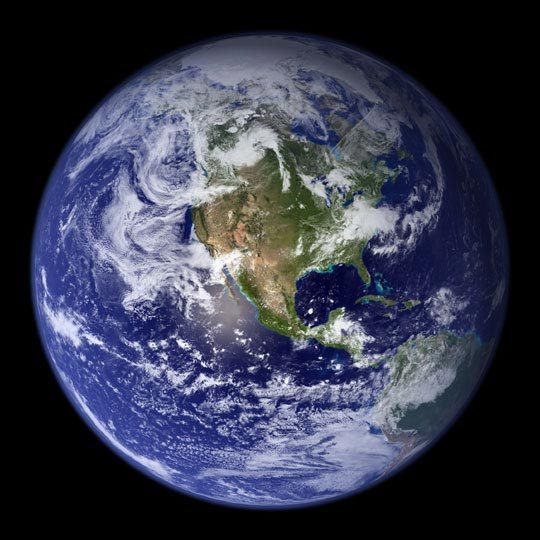Climate Talks End with Small Steps Forward

When the annual round of global climate talks ended on Sunday (Dec. 12), no new treaties or pledges to cut greenhouse gas emissions were on the table. However, negotiators in Durban, South Africa, did continue chipping away at the intractable problem of global warming, making small, concrete agreements, as well as symbolic ones.
While climate negotiations move forward incrementally, science indicates we risk failing to keep global warming within the target that was set during earlier rounds of these talks.
Perhaps the highest profile achievement this year is the Durban Platform — essentially an agreement to come up with a treaty in the coming years, according to Nathan Hultman, an assistant professor at the University of Maryland's School of Public Policy, who attended the talks.
The Durban Platform calls for the creation of a legally binding agreement by 2015, and for it to take effect by 2020, with the intent that nations reduce greenhouse gas emissions enough to limit global warming to either 2.7 degrees Fahrenheit or 3.6 degrees Fahrenheit (1.5 degrees Celsius or 2 degrees Celsius) by 2100. It is believed that a cap on warming along these lines will avert the worst of the sea-level rise, extreme weather, species extinctions and other changes predicted to come with climate change. [How 2 Degrees Will Change Earth]
A new treaty?
This agreement could become the successor to the original climate change treaty, the Kyoto Protocol, Hultman said. However, the document establishing plans for a new treaty doesn't say what such a treaty might look like or who might participate.
In 1997, the Kyoto Protocol established a legal framework for tackling climate change and committed developed nations, not including the United States, which did not sign on, to cutting their emissions. The first commitment period of the Kyoto Protocol ends in 2012. Much of the suspense going into Durban revolved around this treaty's fate.
Get the world’s most fascinating discoveries delivered straight to your inbox.
Although other developed nations, including Japan, Russia and Canada, backed away from extending Kyoto, the European Union agreed to a second commitment period, based on its own pre-existing region-wide plan to reduce emissions. The EU agreed to this in order to see the Durban Platform go forward, Hultman said.
But this is likely the end of the Kyoto Protocol, Hultman added.
"The Kyoto Protocol can fold out gracefully, and some of the more optimistic of the countries in the world think maybe then we will have the new agreement that can take its place afterward," he said.
The details
The talks had more concrete success in sorting out some of the "more nerdy technical details about climate policy," Hultman said.
These included hammering out the details for a Green Climate Fund, which is expected to raise $100 billion a year by 2020 to help developing nations cope with climate change, according to Hultman.
Negotiators also agreed to include carbon capture and sequestration — a technology that prevents carbon dioxide emissions from entering the atmosphere by storing the gas — as an eligible project under the Clean Development Mechanism, which came out of the Durban meeting, that encourages projects to reduce emissions in developing countries. At the Durban talks negotiators also made progress setting up the means to ensure countries are keeping their commitments to reduce emissions, Hultman said.
The gap
Many climate scientists and officials are worried about what the future may hold if the world continues to warm unabated, and Durban offered no new pledges to reduce emissions.
To put the world on a trajectory that would keep warming below the 3.6 degrees F (2 degrees C) target a reality, global greenhouse gas emissions — measured in terms of the most prominent greenhouse gas, carbon dioxide — would need to be no higher than 48.5 gigatons (44 metric gigatons) of carbon dioxide equivalent by 2020, according to the report Bridging the Gap issued in November by the United Nations Environmental Programme. (For reference, greenhouse gas emissions in 2009 measured 54.5 gigatons, or 49.5 metric gigatons, of carbon dioxide equivalent.)
Assuming all nations' existing pledges are honored, the world will fall about 6.6 gigatons (6 metric gigatons) short. However, it is both technologically and economically feasible to fill in this gap, according to the report.
After a brief respite for steadily increasing carbon dioxide emissions during the global financial crisis, emissions resumed their upward trend in 2010.
Re-evaluating
Richard Rood, a climate scientist who teaches a class on climate change problem-solving for graduate and undergraduate students at the University of Michigan, has changed his curriculum to reflect what he believes is a more realistic outcome: 7.2 degrees F (4 degrees C) by the end of the century.
"Currently, we are accelerating our emissions and the pressure for economic growth and economic stability I see overwhelming any desire to reduce emissions for the long-term environmental purpose," Rood said. "It is my opinion that we are committed to that warming."
For his class, he now draws upon a series of papers published in January by the journal Philosophical Transactions of the Royal Society A, which explore the possibility and implications of warming of 7.2 degrees F (4 degrees C) or more.
The combination of underestimates of the rate of increasing emissions, overly optimistic estimates of when global emissions would peak, and the slow progress of climate talks suggest that an increase of this magnitude is more likely than thought, writes Mark New, of the University of Oxford, in his introduction.
Rood, who also blogs about climate for the weather website, wunderground.com, has followed the talks in Durban.
"I am of the opinion it is better to continue talking than not," he said. "But I think any real action is going to percolate up from cities to regions to countries. … I think it's good to have this sort of top-level activity to provide the framework or environment to think about how to behave, but I am not, at this point, looking for the U.N. to provide the solution to this problem. The problem is too engrained across society in the way we behave and the way we use energy and ultimately, the way we consume."
You can follow Live Science senior writer Wynne Parry on Twitter @Wynne_Parry. Follow LiveScience for the latest in science news and discoveries on Twitter @livescience and on Facebook.



